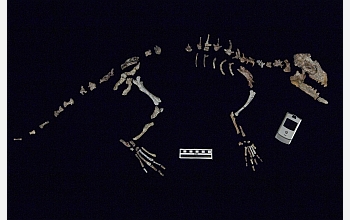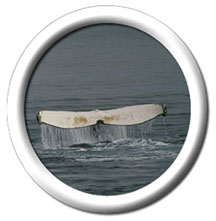
Credit: NEOUCOM
Finding the Four-Footed Ancestors of Whales
News story originally written on December 20, 2007
Scientists have known for a long time that whales, the largest marine mammals, have distant relatives that lived on land millions of years ago. A team of scientists has been searching for fossils to better understand how whales evolved. In the past 15 years, they have found fossils that show how, over millions of years, these mammals evolved from small four-footed land animals to extra large marine animals.
Now the team of scientists has discovered the closest known fossil relative of whales that lived on land. This extinct species lived approximately 48 million years ago. The team studied hundreds of fossil bones and they found that the skulls and ears of the fossils are similar to whales living today.
It may have lived on land, but there is fossil evidence that the whales’ four-footed ancestor spent much of its time in the water. A fox-sized mammal that looked something like a tiny deer, its bones are similar to the bones of animals that wade slowly in shallow water, such as the hippopotamus today. And its teeth are similar to aquatic animals.








